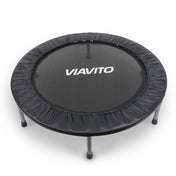With Monte Carlo coming to an end it was interesting to look back and see how the players adapted to the European Clay Courts having spent the recent months on hard Courts.
In particular it was great to see Dan Evans using his style of play to beat Novak Djokovic and progress to the Semi Finals of the Masters series event, amazing to think that Evans had only previously won 4 matches on Clay but he showed that he is capable of using his game style to great effect on any surface.
So what are the characteristics of the 3 main surfaces?
Clay Courts
The pace of these courts are slow and its much more difficult to hit winners. This surface really teaches you how to construct points and be mentally tough.
The ball bounces higher favouring players who hit with a lot of topspin from behind the baseline.
If you are brought up on clay it is a real advantage as you learn how to move efficiently on this surface, Clay Courts are more about sliding than any other surface.
Playing on Clay Courts are great for youngsters to learn on as it allows them time to perfect their technique.
Rafael Nadal has won 13 French Open titles and of Course is regarded as the King of Clay
Hard Courts
This surface is usually considered the middle ground between Clay and Hard Courts, usually of pace but can often change speed depending on how it is painted and sanded.
Hard courts offer a truer bounce which makes it easier to play unlike the unpredictability that you might face on a Clay or Grass court.
All court players tend to prefer playing on this surface.
Unfortunately, out of all the surfaces this is probably the toughest on the body.
Novak Djokovic has the best hard court record in a Slam winning 9 Australian Opens(Open Era)
Grass Courts
This surface really favours the attacking players who like to get free points from the serve, come to the net and keep the rallies shorter.
The ball bounces lower and is the fastest surface compared to Clay and Hard Courts. Unlike Hard Courts you can often get unpredictable bounces.
Grass courts will favour players who can hit flatter and have the ability to slice the ball and keep it low.
It is interesting that over the years Wimbledon have slowed the speed of the courts down by laying a different seed to the grass and also made the balls slightly larger, this was done as they felt that the points were over too quickly and matches were becoming too dominant by the serve. That is why when you tune in to Wimbledon many more matches are being contested from the back of the court.
Roger Federer and Pete Sampras both excelled on this surface, Sampras winning 7 and Federer claiming 8 Wimbledon titles
Did you know that the US Open used to be played on Clay Courts ? much like the Australian Open was played on Grass until 1988, the US Open became a hard court in 1978.

